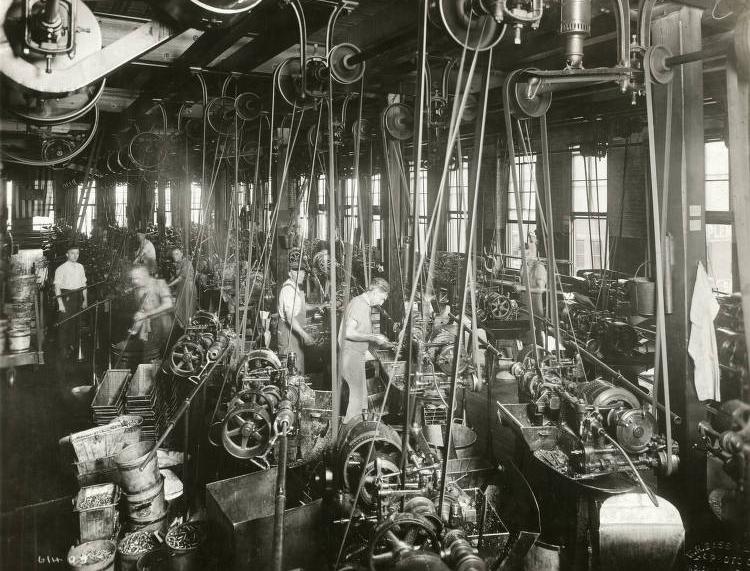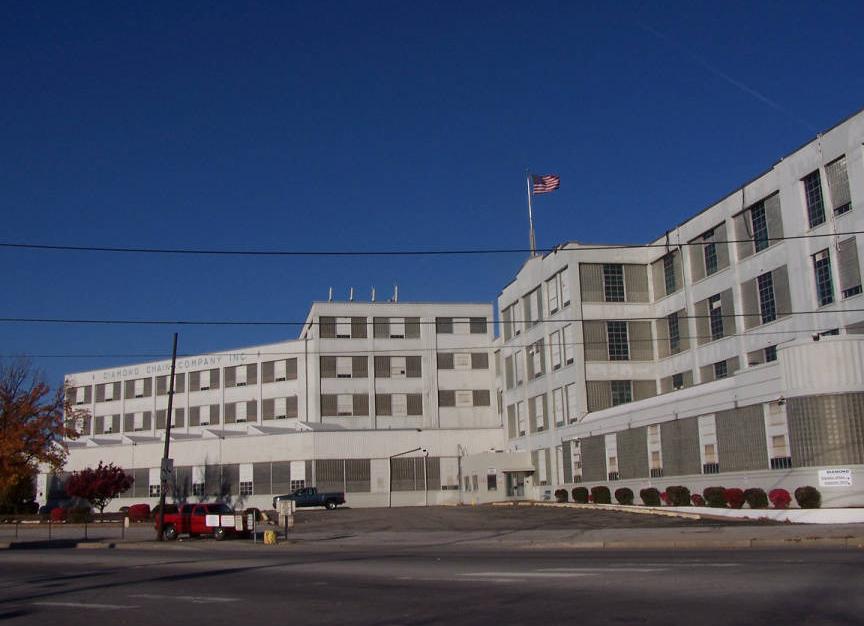On Christmas Eve 1890, (future cofounder of the ), Edward C. Fletcher, and Glenn Howe invested $5,000 to begin manufacturing bicycle chain in Indianapolis. They selected the diamond as their trademark because it symbolized perfection.
Indianapolis Chain & Stamping Company started with four machines and four operators in rented rooms upstairs in a tinner’s shop on South Street. Its only product was a chain to drive the power on a bicycle from the sprocket to the wheel. Development of the block chain in Manchester, England, made the manufacture of the two-wheeled “safety” bike possible and eventually replaced the more dangerous direct-drive big-wheeled bicycles that were popular in the mid-19th century. Before Newby, Fletcher, and Howe founded their company, the blockchain had to be imported to the U.S.

The imported drive chains remained out of the reach for most people. Indianapolis Chain & Stamping Company, therefore, was significant to the development of the bicycle industry in the U.S. Manufacturing the drive chains in Indianapolis made bicycles affordable to the masses in the 1890s. By 1895, the owners built a factory on the site of what later became the and .
The chains were also significant to flight of self-propelled, heavier-than-air aircraft. Wilbur and Orville Wright, owners of a bicycle shop in Dayton, Ohio, were agents for the company, and seven specially designed chains were used on their first successful flying machine at Kitty Hawk, North Carolina, in 1903.

In 1904, L. M. Wainwright of , who had been plant manager since 1899, was able to arrange financing to buy the company, which he renamed Diamond Chain & Manufacturing Company. By 1917, he built a reinforced-concrete factory building at Kentucky Avenue and West Street. This same building, with six major additions, continued to serve as the company’s headquarters well into the 21st century. In 1950, Diamond Chain became a part of Amsted Industries of Chicago, Illinois.
By the 1990s, Diamond Chain supplied roller chain to virtually every industry and had established a worldwide reputation as the builder of the high-quality power transmission chain. By 1993, Diamond Chain had 600 employees in Indianapolis with an annual payroll and benefits of about $22 million. In September of that year, the U.S. Department of Commerce honored the firm with the President’s “E” award for excellence in exports.

However, the company’s success in Indianapolis did not last. While the company had successfully expanded into China in the 21st century, Diamond Chain’s Indianapolis plant had just over 200 employees by the late 2010s. In April 2019, the Ohio-based Timken Company acquired Diamond Chain from Amsted Industries. A little less than a year later, Timken made the announcement that Diamond Chain (and its employees) would vacate its Indianapolis facilities and transfer production to a plant in Fulton, Illinois. In June 2022, the soccer team announced that it had purchased the property of the abandoned plan to build a stadium and a mixed-use development, including retail, restaurants, apartments, and an office complex.

Help improve this entry
Contribute information, offer corrections, suggest images.
You can also recommend new entries related to this topic.

